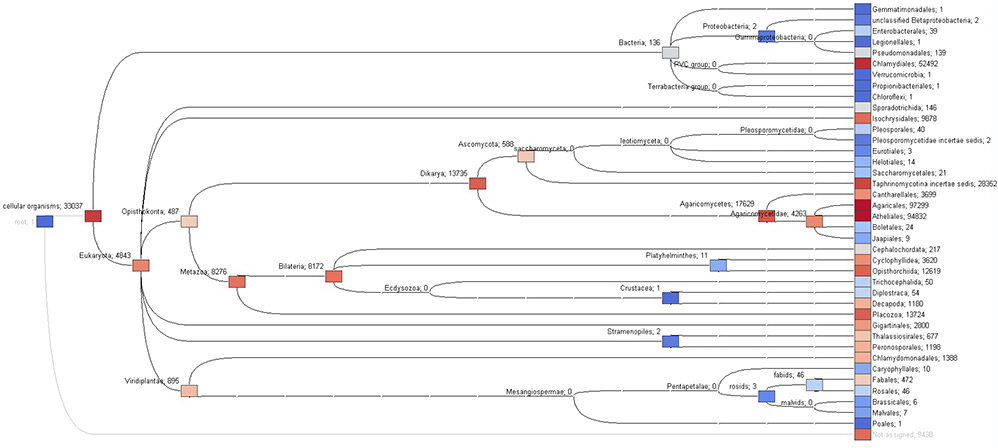The soils in which plants grow are inhabited by microbial communities, with one gram of soil containing around 10-50000 microbial species which comprise about several gigabase of sequence information. The microbial communities which inhabit soils are some of the most complex known to science, and remain poorly understood despite their economic importance. By allowing insights into the role of previously uncultivated or rare community members in nutrient cycling and the promotion of plant growth, metagenomic approaches can contribute to improved disease detection in crops and livestock and the adaptation of enhanced farming practices which improve crop health by harnessing the relationship between microbes and plants.
Case study
The Greater Khingan Mountains Metagenome: reanalyze EBI Project SRP047196, sample SRR1576549
To investigate post-fire changes in soil AMF community structure and diversity. This work was aimed at studying the short- and long-term response of the AMF communities, so sampling was performed at sites were fires had burned 1 or 11 years prior and compared to nearby unburned control sites. To achieve the purpose, evaluation was conducted (i) how soil AMF communities respond to short- and long-term effect of wildfire, and (ii) which factors affect AMF communities and whether there are thresholds for factors driving AMF communities.
Figure 1. Taxonomical tree of Sample SRR1576549 with the numbers of assigned reads

Links
SRR1576549.daa (results in MEGAN6 compatible file)
